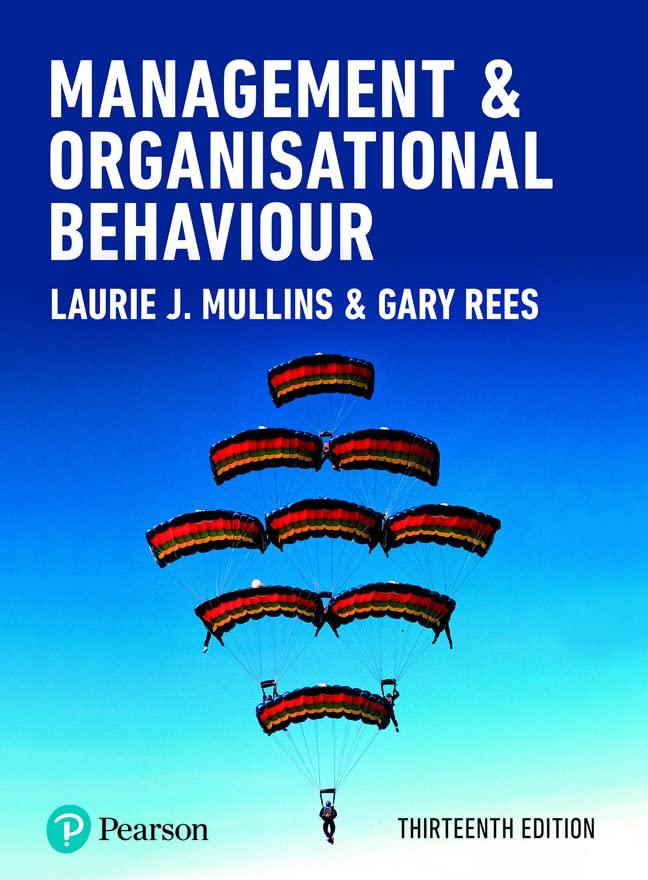Geoplan, a consultancy organisation in Yorkshire and Humberside was in meltdown. As well as a growing number
Question:
Geoplan, a consultancy organisation in Yorkshire and Humberside was in meltdown. As well as a growing number of market and technological challenges, the company was grappling with a structure that didn’t work and in which all roads led back to managing director John Taylor. Finance Director Sara McCartney explains: ‘John would go out and win new business, which created a buzz of excitement. But this was quickly overtaken by a feeling of dread about how we were going to deliver on that promise.’
John and Sara realised that they had to find a better way of working. This meant finding a way of decentralising the business to get away from a line management structure that put John – and everyone else – under huge pressure. They also recognised that they needed to invest in developing their people if they were going to succeed.
Initially Geoplan used a facilitator to help John share his vision and mission for the company, something he found difficult: ‘It felt like being in a padded cell, kicking it around until it all came out.’ But ultimately Investors in People gave the team a ‘Geoplan way of working’. Next, Geoplan used Investors in People to help them develop a new ‘matrix’ structure for the company. This meant that the business became increasingly self-managed and anyone – rather than just John – could lead a project. John credits the leadership and management criteria in the Investors in People framework with helping him to realise that everyone could be a leader at some point in their role.
But now Geoplan’s staff had to step up to that challenge.
Sara: ‘We’ve worked very hard to develop an Investors in People framework that helps people to understand their own competences. That knowledge has given them confidence that they know their stuff and can deliver to global businesses.’
Now people focus on outputs and the value they add to the business. Effective planning and organisation, teamwork and prioritisation has delivered a significant increase in performance.
In 2003, Geoplan was making a loss of nearly half a million pounds a year. In 2011, it made a profit of £400,000. The value of the average contract has risen from £20,000 to £150,000–£200,000, and productivity has gone up from £56k per head in 2002 to £93k per head in 2011. Geoplan puts its improved results down to the increased confidence and ability of their people, who now form project teams to win new business and work much more closely with clients. They win and retain more customers, and their improved performance has enabled them to move from ‘data assembly’
work to large, bespoke jobs where Geoplan can add value. This consultancy approach is also more profitable, and the average value of a contract has risen from ‘about £20k’ to £150–200k.
Involving all staff in management and strategy has also enabled Geoplan to cope with rapid technological change in their sector. This meant Geoplan had to change from being a desktop-based business used by specialists, to online systems used by a wide range of business customers and sectors. This change has also enabled them to expand from being a UK business to working with global clients such as TNT and KFC owners Yum! Brands.
John says that Investors in People also helps Geoplan ‘to explain to a billion-pound business why they should work with you rather than a big company.’
Questions
1. Discuss potential problem areas in decentralising a business away from a line management structure.
2. What do you see as the advantages of a matrix structure with a business becoming more self-managed?
3. Discuss the implications for organisation structure with a change from desktop-based business to online systems.
Step by Step Answer:

Management And Organisational Behaviour
ISBN: 9781292422381
13th Edition
Authors: Laurie Mullins, Gary Rees





